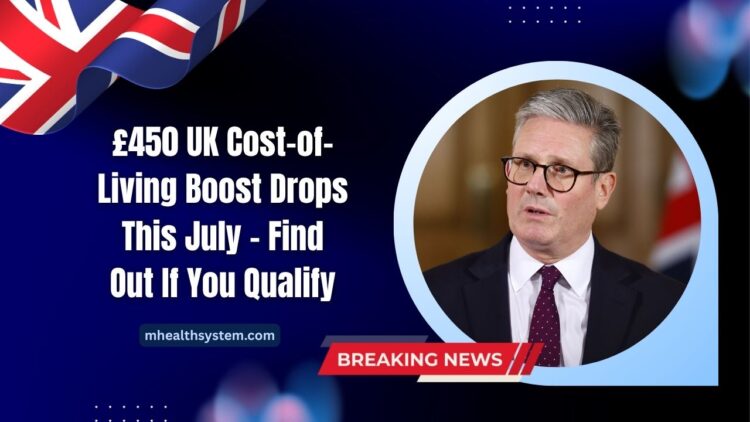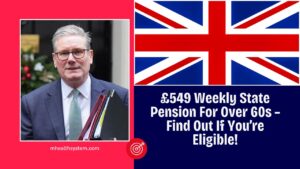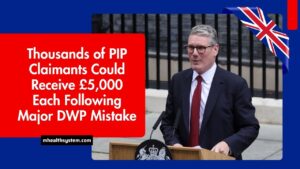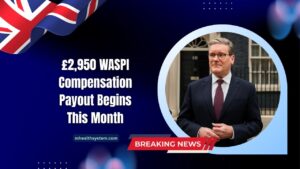Millions of households across the UK are set to receive a £450 Cost-of-Living Payment this July 2025, offering vital support as everyday expenses remain high.
With inflation still burdening low-income families and vulnerable individuals, this one-off payment will provide much-needed relief—especially for those on means-tested benefits.
Here’s everything you need to know about this financial lifeline, including eligibility, payment dates, how to secure your payment, and what to do if you don’t receive it on time.
What Is the £450 Cost-of-Living Payment?
The £450 Cost-of-Living Payment is a non-taxable, one-time benefit provided automatically by the Department for Work and Pensions (DWP).
It’s designed to help individuals and families facing hardship due to the ongoing cost-of-living crisis—including food inflation, high energy bills, and rising rents.
The payment is automatic for eligible claimants. No application is required. Payments will begin from July 19, 2025, and should be completed by July 31, 2025.
Funds will be directly deposited into the same bank accounts where benefits are normally received.
Key Payment Details
| Details | Information |
|---|---|
| Amount | £450 |
| Payment Start Date | July 19, 2025 |
| Payment End Date | July 31, 2025 |
| How Paid | Direct deposit to benefits-linked bank |
| Application Needed | No (Automatic based on eligibility) |
| Payment Reference | “DWP COLP” + National Insurance number |
Who Is Eligible for the £450 Payment?
Eligibility is based on receiving certain income-related benefits during a specific qualifying week set by the government. While the exact qualifying dates are yet to be confirmed, the following benefits are included:
- Universal Credit (UC)
- Pension Credit
- Income-Based Jobseeker’s Allowance (JSA)
- Income-Related Employment and Support Allowance (ESA)
- Income Support
- Working Tax Credit
- Child Tax Credit
Note: Individuals receiving only New Style ESA or JSA—without the income-based component—will not qualify for this payment.
Why Is This Payment Being Offered?
Despite a slight drop in inflation rates, the cost of essential goods and services remains significantly higher than in previous years. Households continue to struggle with:
- High grocery prices
- Elevated energy bills
- Skyrocketing rents
- Costlier transportation
This payment serves as a targeted intervention to help those most at risk of falling behind on basic expenses and to prevent reliance on high-interest debt options.
How to Prepare and Ensure You Get Paid
To avoid any issues or delays with your £450 payment, take the following steps now:
- Verify bank account information registered with the DWP
- Update your contact details in case the DWP needs to reach you
- Ensure continued benefit eligibility if your circumstances have changed
- Monitor your bank statements between July 19–31, 2025, for a payment labeled “DWP COLP”
What If I Don’t Receive the Payment?
If you believe you qualify but haven’t received the £450 by July 31, 2025, you should:
- Check your bank transactions for the “DWP COLP” reference
- Confirm your eligibility based on benefit status
- Contact the DWP through your usual method (online portal, phone, or Jobcentre)
Acting promptly will help ensure any missing payments are traced and processed quickly.
The £450 Cost-of-Living Payment is a timely initiative to cushion the impact of ongoing economic pressures for millions of UK residents.
With automatic payments starting from July 19, 2025, eligible recipients can expect help without needing to jump through administrative hoops.
By staying alert, verifying your benefit status, and checking your bank account for the transaction, you can ensure you don’t miss out on this crucial financial boost.
FAQs
Do I need to apply for the £450 Cost-of-Living Payment?
No. The payment is automatic for those receiving eligible benefits during the qualifying period.
Will everyone on benefits receive the payment?
Only individuals receiving income-related benefits such as UC, ESA (income-related), or Pension Credit will qualify.
How do I know I received the payment?
Look for a bank transaction labeled “DWP COLP” followed by your National Insurance number.




